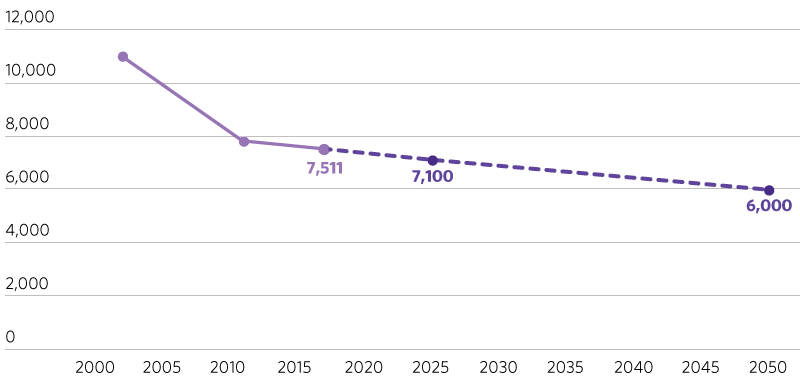Indicator
Motorist Delay at Highway-Rail Grade Crossings
CMAP estimates that weekday motorist delay at the region’s grade crossings cost residents $58 million in wasted productivity in 2017 alone. This indicator measures the aggregate hours of delay per weekday experienced by motorists at railroad crossings in the seven-county CMAP region.
Targets
From 2002 to 2011, a number of strategies were implemented that resulted in a large reduction in weekday delay between the baseline and current analyses -- these include closing lines and grade crossings, re-routing of service, and service realignments. The pace of change slowed from 2011 to 2017. In the future, the pace of change will reflect the most recent rate of change. Proposed targets reflect trends from 2011 to 2017, and are consistent with 17 proposed CREATE grade separations being completed by 2050.
2025: 7,100 hours or less of motorist delay at grade crossings per weekday
2050: 6,000 hours or less of motorist delay at grade crossings per weekday
Sections
- Actual
- Target

GO TO 2040 Context
This indicator has been carried forward from GO TO 2040. The GO TO 2040 Plan Update established a 2015 target of 7,675 hours or less of motorist delay per weekday. As of 2017, the region experienced 7,511 hours per weekday, surpassing the 2015 target and, in fact, nearly reaching the 2020 target of 7,500 hours or less.